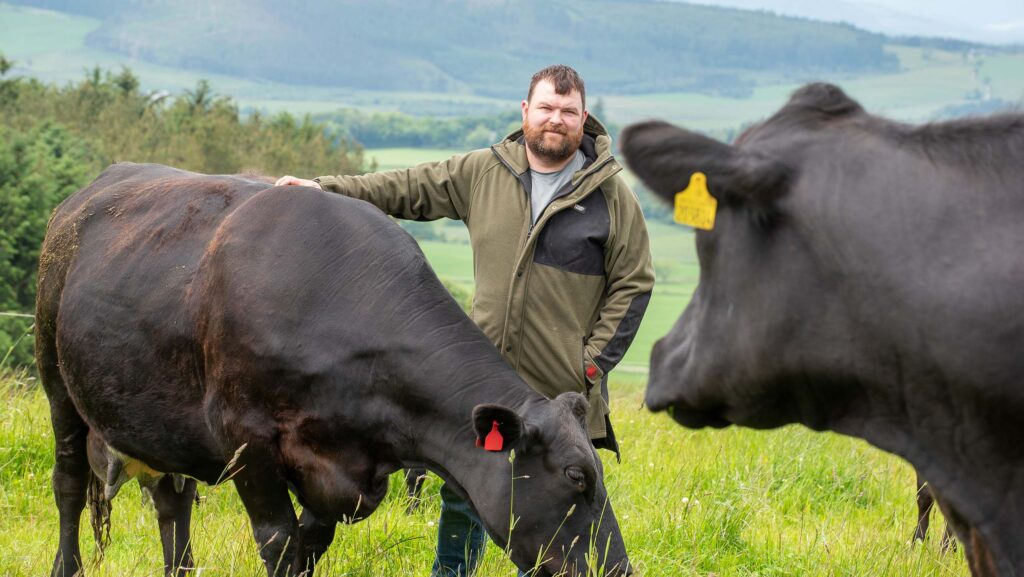Farmer Focus: Grass-finished bulls saved £376 a head feed
 Duncan Morrison © Angus Findlay
Duncan Morrison © Angus Findlay This summer has been rather mixed, to say the least. It seems to have been 90% dull and dreary with only brief interludes of sunshine, as opposed to the scorching summers we have almost become accustomed to.
This suits us, to an extent, as much of the land we farm is prone to burning up. The moist conditions have aided forage crop establishment, which has been welcome.
See also: Farmer Focus: Why I have a low-cost focus for sucklers
We are part of a project comparing livestock wintering options, following forage crops through from establishment to feeding and looking at the relative feed value versus the costs to get there.
In addition to traditional forage crops, our deferred grass and bale-grazing setup will also be included in the comparison, so it will be interesting to see how it stacks up financially.
We have placed an order for two bale unrollers. These are pulled by an ATV and should help improve our winter grazing system and eliminate poaching around feed rings.
In my previous article, I mentioned a trial we are doing, finishing bulls at grass instead of intensively indoors. Most of the bulls have now gone, and without counting my chickens too early, it seems successful.
They averaged 1.9kg daily liveweight gain from April to slaughter, mostly grading R or -U at fat class 2 or 3. We have several tweaks to the system already planned for next year, hoping to improve.
The bulls still need a little finishing at the end, but we have seen concentrates drop from £546 to £179 a head to leave a gross margin of £400-£465 a head.
We plan to lift sheep numbers over the next couple of years, which will be exciting.
We have weaned all our lambs and sorted out a batch for sale, as well as picking out ewe lambs to be retained and tupped later in the year.
We have been really pleased with how the lambs have performed, although a small flock of sheep on a cattle farm was always likely to live a charmed life.
Stock bulls were removed from their bulling groups recently after two cycles with the cows.
Despite feeling confident that the majority were safely in calf, it was inevitable there would be a cow bulling the day the bull was due for removal.

